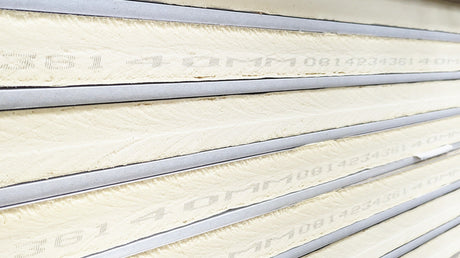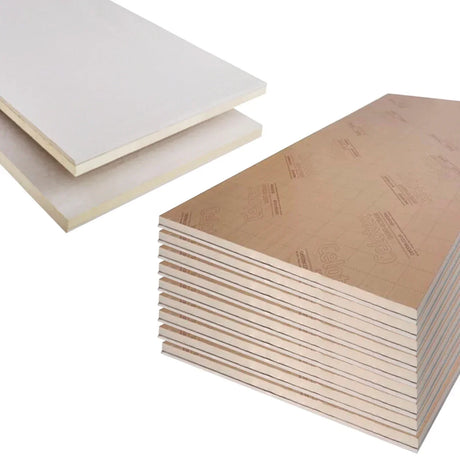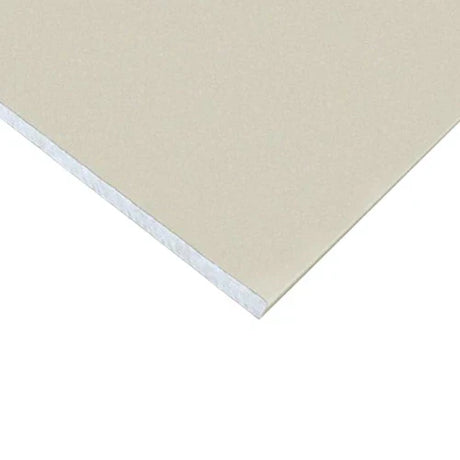When I first started considering timber decking for my garden, I felt overwhelmed by the options. Should I choose hardwood or softwood? What about sustainability credentials? And how does timber cladding fit into the equation if I'm planning a larger outdoor transformation? These questions are more common than you might think, and the good news is that making an informed choice doesn't have to be complicated.
At DIY Building Supplies, we've helped countless DIY enthusiasts and trade professionals navigate these decisions, and we've learned that understanding the basics makes all the difference. This guide will walk you through everything you need to know about choosing sustainable timber for your outdoor projects, whether you're building a simple garden deck or creating a complete exterior transformation with cladding.
Understanding Sustainable Timber: Why It Matters
Before diving into specific products, it's worth understanding what makes timber truly sustainable. When we talk about sustainable timber, we're referring to wood that's been responsibly sourced from forests managed with long-term environmental health in mind. This isn't just about feeling good—it's about ensuring future generations can enjoy the same natural resources we benefit from today.
The Forest Stewardship Council (FSC) and Programme for the Endorsement of Forest Certification (PEFC) are the two main certification schemes you'll encounter when shopping for timber in the UK. These organisations verify that timber comes from responsibly managed forests where trees are replanted, wildlife habitats are protected, and local communities benefit from forestry operations.
For your project, choosing certified timber means you're investing in materials that meet rigorous environmental and social standards. UK suppliers like James Latham and Arnold Laver stock extensive ranges of FSC and PEFC certified timber, making it easier than ever to make responsible choices without compromising on quality or availability.
Timber Decking: Finding Your Perfect Match
Creating an outdoor living space with timber decking transforms how you use your garden. Whether you're planning intimate family barbecues or simply want a comfortable spot for your morning coffee, the right decking makes all the difference.
Softwood Decking: The Accessible Option
When you're new to decking projects, pressure-treated softwood offers an excellent starting point. Typically sourced from Scandinavian forests, these materials—predominantly pine and spruce—provide reliable performance at accessible price points. UK manufacturers like Jacksons Fencing and Timco supply quality pressure-treated decking boards that offer 15 to 25 years of service life when properly maintained.
The treatment process involves forcing preservatives deep into the wood fibres, protecting against rot, decay, and insect damage. This process has evolved significantly in recent years, with modern treatments being far more environmentally friendly than older copper-chrome-arsenic compounds. Today's copper-based treatments provide excellent protection whilst being considerably safer for both installers and the environment.
What I particularly appreciate about pressure-treated softwood is its versatility. The boards readily accept stains and oils, allowing you to customise the appearance to complement your garden's aesthetic. This flexibility means you can start with a natural wood tone and change your mind later without major complications.
Hardwood Decking: Premium Performance
For those seeking enhanced durability and distinctive aesthetics, hardwood timber decking represents a step up in both performance and investment. European oak, increasingly popular in UK gardens, offers exceptional durability alongside natural resistance to decay. This isn't the same oak you'll find in antique furniture—it's specifically grown and processed for exterior applications, with suppliers like British Hardwoods and Touchwood providing sustainably sourced European oak with full certification.
The density of hardwood creates natural resistance to wear and weathering, meaning your deck maintains its structural integrity even in high-traffic areas. This durability translates to reduced maintenance requirements over time, though you'll still want to clean and oil the surface annually to maintain its appearance.
One consideration when working with hardwood is its weight. The increased density that provides durability also makes individual boards considerably heavier than softwood alternatives. This isn't necessarily a problem, but it's worth considering if you're planning a DIY installation, particularly for elevated decks where you'll be manoeuvring boards into position.
Composite Alternatives: A Contemporary Solution
Whilst this article focuses primarily on natural timber, composite decking deserves mention as an increasingly popular alternative. These products, combining wood fibres with recycled plastics, offer exceptional durability with minimal maintenance requirements. UK manufacturers like Millboard and Composite Prime produce high-quality composite decking that maintains its appearance without the annual oiling required by natural timber.
However, composite materials come with their own considerations. The initial investment typically exceeds that of natural timber, and whilst maintenance is reduced, repairs can be more complicated when damage does occur. For many projects, the choice between natural timber decking and composite materials comes down to personal preference regarding aesthetics and your willingness to invest time in regular maintenance.
Timber Cladding: Extending Sustainable Choices
If your outdoor project extends beyond ground-level decking to include garden rooms, sheds, or exterior walls, timber cladding provides the opportunity to create cohesive design whilst maintaining your commitment to sustainability.
Cladding Profiles and Their Applications
Timber cladding comes in various profiles, each offering distinct aesthetic and functional characteristics. Shiplap cladding, with its overlapping board design, provides excellent weather protection and has become increasingly popular for contemporary garden buildings. The interlocking profile naturally sheds water whilst creating attractive shadow lines that add visual interest.
Feather-edge cladding offers a more traditional appearance whilst maintaining excellent weather resistance. The tapered profile allows boards to overlap, creating a robust barrier against wind and rain. This style has particular historical significance in British architecture and works beautifully for projects in conservation areas or where maintaining traditional aesthetics is important.
For more contemporary projects, vertical cladding installations have gained significant popularity. This approach, often using square-edge or shiplap profiles oriented vertically, creates clean, modern lines whilst offering practical advantages in terms of water shedding and maintenance access.
Matching Materials for Cohesive Design
When planning both decking and cladding for the same project, consider how materials work together visually. Using the same timber species for both applications creates a unified aesthetic, though you might choose different profiles or treatments to provide visual interest whilst maintaining overall coherence.
UK suppliers like Travis Perkins and Jewson offer comprehensive ranges that make it straightforward to source matching materials. Many manufacturers produce coordinated product lines specifically designed to work together, simplifying the selection process whilst ensuring compatible performance characteristics.
Making Your Selection: Practical Considerations
With a basic understanding of available options, how do you actually choose the right materials for your specific project? Several practical factors will influence your decision beyond basic material characteristics.
Budget and Long-Term Value
Initial material costs represent just one element of your overall investment. When comparing options, consider the complete lifecycle cost including maintenance requirements, expected longevity, and eventual replacement considerations. A more expensive hardwood might actually represent better value when its extended lifespan and reduced maintenance are factored into the calculation.
For a typical 20-square-metre deck, pressure-treated softwood might cost £500 to £800 for materials, whilst European oak could range from £1,500 to £2,500. However, the softwood will likely require replacement or significant refurbishment within 20 years, whilst the oak could easily last 40 years or more with appropriate maintenance.
Maintenance Requirements and Realistic Expectations
Be honest with yourself about maintenance commitment. If you genuinely enjoy spending weekend afternoons caring for outdoor spaces, the regular oiling and cleaning required by natural timber won't feel burdensome. However, if outdoor maintenance feels like a chore, composite materials or hardwoods with lower maintenance requirements might better suit your lifestyle.
Annual maintenance for timber decking typically involves cleaning to remove dirt and organic growth, followed by application of protective oil or stain. This process might take 4 to 6 hours for a medium-sized deck—not onerous, but something to factor into your decision-making.
Installation Considerations
Your skill level and available time influence material selection significantly. Softwood's lighter weight and easier workability make it more forgiving for first-time decking installations. Hardwood requires sharper tools, more careful planning around fixing positions to prevent splitting, and greater physical effort during installation.
For cladding projects, consider access requirements and working at height. Professional installation might prove worthwhile for more complex cladding projects, even if you're comfortable tackling the decking yourself.
Working With DIY Building Supplies
We understand that choosing the right materials represents just the first step in your project. That's why our team focuses on providing comprehensive support throughout your journey, from initial material selection through to completion.
When you contact us about timber for your project, expect detailed conversations about your specific requirements. We'll discuss your site conditions, intended use, aesthetic preferences, and budget constraints to recommend materials that truly suit your needs. This consultative approach stems from our own frustrations with suppliers who simply take orders without offering genuine expertise.
Our relationships with leading UK timber suppliers mean we can source quality materials efficiently whilst maintaining competitive pricing. Whether you need FSC-certified European oak from British Hardwoods or pressure-treated softwood from established manufacturers, we handle the sourcing, quality checking, and delivery coordination.
Starting Your Sustainable Timber Project
Beginning a timber project needn't be daunting. Start by clarifying your priorities—what matters most for your specific situation? If sustainability is paramount, focus exclusively on FSC or PEFC certified materials. If maintenance minimisation is crucial, consider hardwoods or composite alternatives. If budget constraints are significant, pressure-treated softwood offers excellent value whilst still allowing responsible sourcing choices.
Measure your space carefully, accounting for board wastage—typically 10 to 15 per cent for decking projects. Sketch your planned layout, considering factors like board orientation, fixing positions, and how decking relates to existing structures. This preparation makes conversations with suppliers far more productive and helps ensure accurate material ordering.
Consider visiting completed projects before finalising your decisions. Many timber suppliers maintain display areas showcasing different timber species and profiles. Seeing and touching actual materials provides insights that photographs simply cannot convey.
Moving Forward With Confidence
Choosing sustainable timber for your decking and cladding projects demonstrates commitment to responsible building practices whilst creating beautiful, functional outdoor spaces. The wealth of quality materials available from UK suppliers means you needn't compromise on either sustainability or performance.
At DIY Building Supplies, we're ready to support your project with expert guidance and quality materials. Our team understands the questions you're asking because we've navigated these decisions ourselves. Contact us to discuss your specific requirements—we're here to ensure your project starts with exactly the right materials and the knowledge to use them successfully.
Your garden transformation begins with informed material choices. Let's make sure those choices serve both your immediate needs and longer-term aspirations for sustainable, beautiful outdoor spaces.









